Introduction
Metropolitan Museum is one of the biggest museums in the United States that has numerous historical objects, paintings, and sculptures from various parts of the world. Some of the major cultures demonstrated by the objects found in the museum include African, European, Egyptian, and Asian.
The objects in the museum vary in terms of age and usage with some objects and paintings dating back several years BC, while others can be traced to recent ages. As a result, the museum plays an important role in conserving the cultures of societies and educating the young generations.
Education of young generations usually concerns the past cultures and their significance in the lives of individuals, who lived during the time. Therefore, the essay examines historical objects, sculptures, and paintings like a soup plate, guardian figure, sugar pot, cosmetic jar, and Sphinx of Hatshepsut found in the metropolitan museum.
Soup Plate
A plate is an object that displays some ancient cultures of the Europeans, who lived in present England and the United States. The history of the plate dates back to about 1818-1846, and it originated from England at a place called West Midlands. Also, the plate is very crucial in bringing out the innate elements of culture ancient to British and European communities, who lived in England during the time.
Backman explains that in ancient times, people used to express their feelings and daily activities through fine work of art designed on items or objects that they used (50).
The paintings and design of the plate show pictures of boats, buildings, and animals, an aspect that creates an impression in the mind of a person, who comes across the object that the people of the time were herders and anglers. The impression develops due to the artistic features that are evident from the plate manufactured using ceramic products.
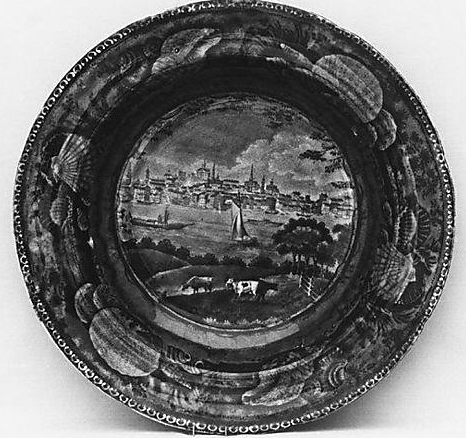
Figure 1: Soup Plate
Sugar Pot
The pot is a composition that originated from North Carolina, Central Piedmont location in the United States. Decoration of the plate displays fine works of art and brings to the fore the art of ancient American societies. The styles used in the design of the pot are very artistic and present some elements that art can introduce to an object manufactured using ceramic products.
According to Cochran, historical objects and paintings are some of the important components that define the identity of society (2). Remarkably, the pot is among the oldest objects in the societies living in North Carolina, especially those in Central parts of Piedmont.
The pot’s design and production date back to about 1800-1900 AD. Other artistic aspects that are evident in the pot include its presentable size and exuberant attractive slip, which results in a fine and unique pot in the history of American societies.
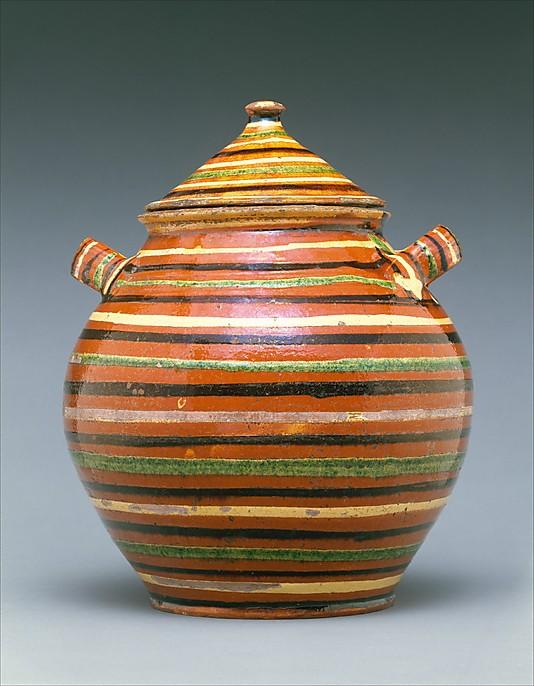
Figure 2: Sugar Pot
Guardian Figure in the Form of King Amenemhat II
The painting demonstrates the keen nature of Egyptians, who were very observant of the times and events. The statue dates back to the middle kingdom of Egypt during 1919-1885 BC. The discovery of the statue happened in a royal graveyard during an excavation that took place in Mastaba. From the painting, an individual acquires some level of knowledge of the past leadership of the society.
Hence, the statue is very vital in defining the culture of the Egyptians during the middle kingdom period (Cochran 3). The knowledge acquired takes place since the painting represents a statue of a deity that has some features of ancient Egyptian Pharaohs. The crown and the divine kilt are some of the elements that create a picture of leadership in the mind of every individual, who comes across the painting.
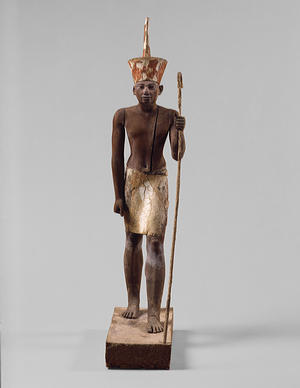
Figure 3: Guardian Figure in the Form of King Amenemhat II
Cosmetic Jar in the Form of a Cat
The cosmetic jar is a wonderful piece of art that presents the livelihoods of ancient Egyptian societies and dates back to about 1991-1783 BC. In the design, the jar has calcite, which the Egyptians called alabasters, with eyes made using crystals of rock and copper. The jar is among the oldest designs of Egypt that came into the limelight during the middle kingdom of Egypt when domestication of animals was in course.
Moreover, the jar represents some of the early animals that the Egyptian people are domesticated. Thus, the object is very important in the study of the cultures of Egyptians, especially during the middle kingdom (Backman 43).
The color of the cat is golden, and the eyes are luminous green, an aspect that presents a very attractive and well-decorated artwork. The fine work of art is clear in the design of the cat since features such as attention, and a hunter’s look is apparent. These features are unique and limited to only a few ancient objects of the time.
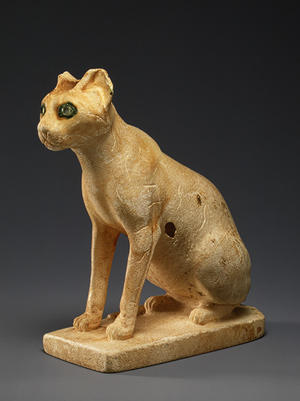
Figure 4: Cosmetic Jar in the Form of a Cat
Sphinx of Hatshepsut
The Sphinx of Hatshepsut is a large sculpture of a female Pharaoh that demonstrates the respect and love that ancient Egyptian accorded to their leaders. History of the sculpture dates back to the period of the new kingdom during the reign of Hatshepsut 1473-1453 BC. In the sculpture, the body takes the form of a lion, and the head belongs to a human being.
The design of the sculpture shows some expressions that the artist might have pondered while creating the sculpture. Cochran asserts that the Egyptians used sculptures and monuments to express their cultures and lifestyles (3). The lion shape of the sculpture is the presumed rule and control of the Pharaohs.
On the other hand, the beautiful face of the queen dressed in the names cloth and royal bead shows the love that the leader had on the people within the kingdom. By looking at the painting in the museum, one gets the impression that the Egyptians loved and respected their leaders. The love and respect are clear from the design and shape of the sculpture alongside other numerous objects and paintings that the Egyptians designed for their leaders.
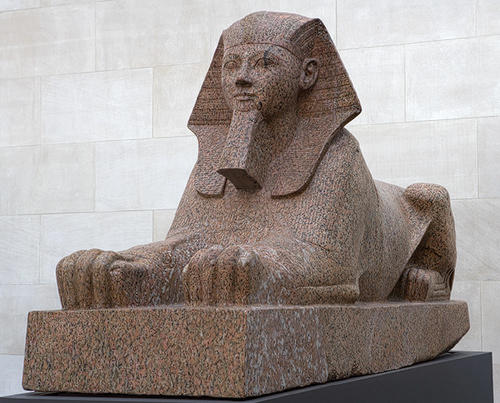
Figure 5: Sphinx of Hatshepsut
Conclusion
Metropolitan Museum is very important in informing and educating individuals on the ancient lives of societies in the world. African, European, American, and Egyptian cultures are among the major cultures represented in the museum. The representation of the cultures is evident from the objects, sculptures, and paintings found in various wings of the museum like the recently completed American wing.
Objects, sculptures, and paintings found in the museum represent various aspects of human life, such as religion, leadership, culture, and economic activities that individuals performed during historical periods. It is evident that human beings are social creatures, who express their feelings and events through work of art using various elements like sculptures, objects, or paintings.
Some of the objects, sculptures, and paintings discussed include Soup Plate, Guardian Figure in the Form of King Amenemhat II, Sugar Pot, Cosmetic Jar in the Form of a Cat, and Sphinx of Hatshepsut. The objects are useful in the study of past cultures of societies in Egypt, England, and America.
Works Cited
Backman, Clifford. The Cultures of the West: A History. London: Oxford University Press, 2012. Print
Cochran, Carol. “The Ostracon.” Journal of the Egyptian Study Society 13. 2 (2002):1-20. Print